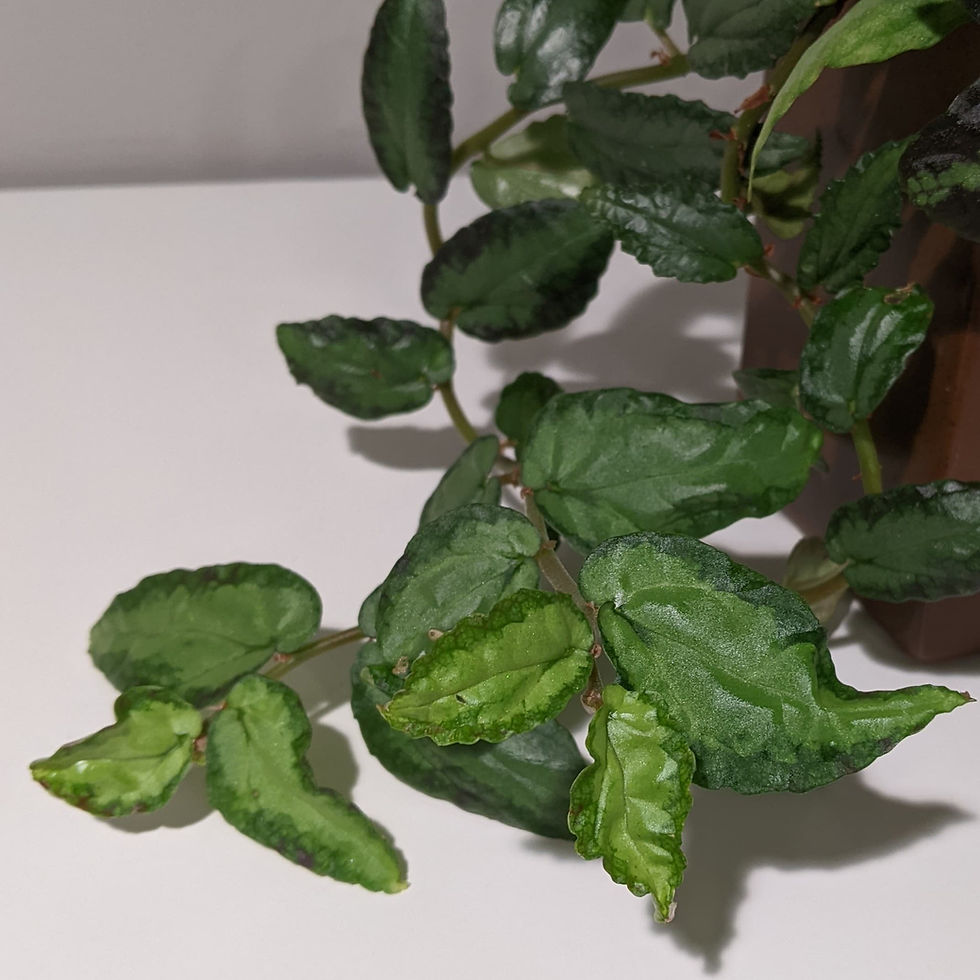
Here are some of the plants we recommend if you're setting up a vivarium with high humidity! The plants you choose will largely come down to size/durability (will the inhabitant break/trample them?) and safety (could the plants be a danger to the inhabitant?). Always double check the toxicology of plants you plan to add, to be sure they're safe in the context you plan to use them.
In general, it's extra important to provide quality full spectrum lighting when adding plants to your setup. Not enough light is one of the main reasons plants fail to thrive - although overwatering, poorly suited substrate, etc. also contribute.
Generally considered safe, even for leaf-nibblers:
Pileas
Pilea depressa, Pilea glauca, Pilea microphylla, Pilea peperomioides, etc.
 |  | | |
Pellionias
Pellionia repens, Pellionia pulchra
 |  | | |
Peperomias
Peperomia prostrata (String of Turtles), Peperomia 'Ruby Cascade,' Peperomia 'Frost,' etc.
 |  |  |  |
Spider Plants
Chlorophytum comosum
 |  | |
Bromeliaceae Family
Bromeliads, Airplants
Marantaceae Family
Marantas, Calatheas, Ctenanthes, Stromanthes, Goeppertias, etc.
Common names include prayer plants / rattlesnake plants
 |  |  | |
Acanthaceae Family
Strobilanthes, Hypoestes, Fittonias, etc.
Common names include Dragon's Tongue, Nerve Plant, Waffle Plant, Polka Dot Plant, Persian Shield, Zebra Plant, etc.
 |  |  | |
Also popular, but check toxicology:
Most of these are generally safe in vivaria, but can cause irritation/GI upset if chewed on or eaten.
Spiderworts (Commelinaceae family)
Tradescantias, Callisias, Cyanotis, Geogenanthus, etc.
| | | |
Pothos (Epipremnum)
Epipremnum aureum, Epipremnum pinnatum, etc.
 |  |  |  |
Scindapsus
Scindapsus pictus, Scindapsus treubii, etc.
 |  |  |  |
Syngoniums
Syngonium podophyllum, Syngonium erythrophyllum, Syngonium wendlandii, etc.
| | | |
Ficus
Ficus pumila, Ficus pumila 'Quercifolia'
|  | | |
Philodendrons
Philodendron...
Dracaenas
Ferns
Begonias
ZZ Plants
False Aralias
 | | | |
Marcgravias
コメント